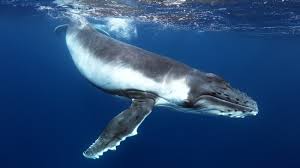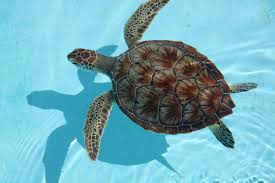The Bowhead Whale, a marvel of the marine world, boasts an allure that extends far beyond its sheer size. Renowned for their resilience, these majestic creatures endure the freezing Arctic waters, demonstrating a remarkable adaptability that has intrigued scientists and nature enthusiasts alike. This comprehensive overview aims to shed light on the fascinating world of the Bowhead Whale, delving into their unique characteristics, behavior patterns, and their undeniable importance within the intricate web of marine life.
- Definition and Alternate Names: The Bowhead Whale, also known as the Arctic Whale or the Greenland Right Whale, is regarded as the longest-living mammal on Earth. This marine mammal is best known for its large size, with adults typically reaching lengths of 14 to 18 meters, and its striking bow-shaped upper jaw, from which it gets its common name.
- Importance of Understanding Bowhead Whales: The study of Bowhead Whales is crucial for multiple reasons. Firstly, their notable longevity offers invaluable insights into aging and disease resistance. Secondly, as a key species in Arctic marine ecosystems, their health and numbers can indicate changes in the environment, making them an important bioindicator species. Lastly, learning about their unique adaptations to survive in cold water habitats can promote advancements in the field of marine biology and conservation.
Characteristics
A. Physical features
- Black Body with Distinct Markings: The Bowhead Whale’s body is primarily black, which stands out against the icy backdrop of its Arctic habitat. This characteristic coloration is complemented by occasional white spots that add a unique aspect to its appearance.
- Size and Dimensions: Bowhead whales are colossal creatures, measuring up to 60 feet in length and weighing up to 100 tons. Their substantial size makes them one of the largest species of whales in existence.
B. Unique Traits
- White Chin, Throat, and Belly: One of the distinguishing features of Bowhead Whales is their white chin, throat, and belly. This color contrast offers an interesting counterpoint to their predominantly black body.
- Specific Characteristics of the Genus Eubalaena: Bowhead Whales belong to the genus Eubalaena, noted for their massive heads which can measure up to one-third of their total body length. This unique trait aids in breaking through the Arctic ice to breathe while submerged.
Distribution and Habitat
- Historical Distribution: Bowhead whales were once widespread across all the Arctic and subarctic seas. Their population was severely diminished due to intense commercial whaling during the 17th to 19th centuries, leading to a substantial contraction in their geographical range.
- Current Status and Population: Today, the presence of bowhead whales is primarily confined to five discrete populations in the Arctic regions. These include the Western Arctic population in the Beaufort Sea and the Eastern Canada-West Greenland population in Baffin Bay. Despite past hunting pressures, most populations are showing signs of recovery, although their numbers remain significantly lower than pre-whaling estimates.
Related Post : The blue whale
- Presence in Arctic Regions:
- Beaufort Sea: The Western Arctic bowhead population in the Beaufort Sea is robust and shows positive growth trends.
- Baffin Bay: In contrast, the Eastern Canada-West Greenland population in Baffin Bay is still recovering and remains vulnerable.
- Hudson Bay: Bowhead whales are occasionally sighted in Hudson Bay, suggesting that this region may serve as a transient habitat.
Feeding Adaptations
A. Mouth Structure
- Impressive Dimensions: The Bowhead Whale is known for its colossal mouth, which is disproportionately large compared to its overall body size. The mouth structure can be up to one-third of the whale’s total body length, making it unique among marine creatures.
- Record-breaking Oral Cavity: The size of the Bowhead Whale’s oral cavity is record-breaking. It has a massive tongue and an arching jawline, which allows it to filter more water and consume a larger volume of its primary food source—plankton.
B. Dietary Habits
- Specialized Feeding Adaptations: The whale’s baleen plates, which are long, flat, and fringed structures in the whale’s mouth, act as a filtration system. Bowhead Whales feed by swimming through swarms of plankton with their mouths open, and the baleen plates help to filter the plankton from the seawater.
- Notable Features in Comparison to Other Cetaceans: Unlike most other whales who feed by diving deep, Bowhead Whales are surface feeders. Their unique mouth and baleen structure allow them to efficiently skim the ocean’s surface for plankton. This sets them apart from other cetacean species.
Conservation and Extinction Issues
- Climate Change: One of the significant menaces facing Bowhead whales is the rapid changes in their Arctic habitat due to global warming. The receding ice levels affect their feeding and breeding patterns.
- Ocean Noise: Increased human activities such as shipping, offshore drilling and seismic surveys have resulted in heightened noise levels in the ocean. These disturbances interfere with Bowhead whales’ communication and navigation patterns.
- Pollution: Industrial waste and plastic pollution pose a considerable threat to Bowhead whales, affecting their health and causing a decline in their population.
Future Prospects
- Legal Protections: Numerous international laws and treaties aim to protect Bowhead whales from hunting and other threats. Their enforcement is critical to these majestic creatures’ survival.
- Conservation Initiatives: Non-governmental organizations and several countries are putting substantial efforts into conserving marine habitats and promoting sustainable fishing practices.
- Public Awareness: Raising public awareness about the importance of preserving marine biodiversity and the specific challenges faced by Bowhead whales is a vital aspect of conservation efforts.
Length of Baleen
- Baleen plates in bowhead whales: Bowhead whales have the longest baleen plates among all whale species, with some reaching up to 4 meters in length. These plates, which hang from the upper jaw and number around 600 per whale, play a critical role in the mammal’s feeding process.
- Historical significance of “whalebone”: Before the advent of modern materials, bowhead whale baleen – often referred to as “whalebone” – was highly prized. Its length and strength made it a versatile material used in a variety of products, including corsets, fishing rods, and umbrella ribs.
- Dimensions of baleen plates in comparison to other whale species: While most whale species have baleen plates that are around 1 meter long, the bowhead’s baleen plates stand out significantly. Their length, combined with their density and strength, makes the bowhead whale a unique specimen in the cetacean family.
Longevity
- Bowhead Whale Lifespan: The Bowhead whale, scientifically known as Balaena mysticetus, is remarkable for its stunning lifespan. Unlike other species, this magnificent marine mammal can live over 200 years, making it one of the longest-living mammals on Earth.
- Comparisons to Other Cetacean Species: When compared to other members of the Cetacean order, the Bowhead whale surpasses them all in terms of longevity. For example, Blue whales live up to 70-90 years, and the Fin whale’s life span stretches up to 80-90 years, which pales in comparison to the Bowhead’s 200+ years.
- Factors Contributing to Their Longevity: Numerous factors contribute to the extended lifespan of Bowhead whales. These include their slow metabolic rate, large size, and exceptional ability to resist diseases and cancer. The extreme cold of their Arctic habitat might also play a role in their longevity, as it slows down cellular metabolism and aging.
Conclusion
A. The bowhead whale, with its remarkable longevity and unique biological traits, has captivated scientists and marine biologists worldwide. As the only baleen whale to spend its entire life in arctic and sub-arctic waters, its ability to survive in such harsh environments is truly awe-inspiring.
B. The preservation and study of bowhead whales serve a dual purpose. Not only does it safeguard a unique and precious marine species, but it also holds the potential for groundbreaking scientific insights. Understanding the bowhead whale’s adaptations to extreme cold and its extraordinary lifespan could unlock new avenues in human medicine and longevity research.
C. The future of bowhead whale conservation hinges on a combination of continued scientific research and robust protective legislation. Increased public awareness and education regarding the importance of these majestic creatures will also play a significant role in ensuring their survival for generations to come.



